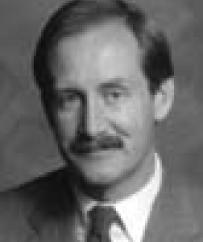In hopes of fleshing out a vision for the city, county and region we asked our readers to provide us with their hopes for the new year. TPR is pleased to offer a sampling of the highlights of what they feel should and could be part of the 2002 agenda.

Rick Cole
This is the year of the prairie fire. Like the fall of the Berlin Wall or the stunning victory of Prop. 13, no one in power anticipates that the sleeping giant of public opinion will shake itself from its slumber. But the uptick in crime, the downturn in the economy and the continuing erosion quality of life all add up to a highly combustible combination. Some opportunists will try to fan these flames, like Pete Wilson did with Prop. 187, and likely be burned. And some new leadership will emerge But all of the money that will be spent by Riordan and Davis will only go so far in diverting attention away from the fact that neither has the capacity to lead a great state in good times, let alone the stormy times we are entering. Let us hope we are blessed with the emergence of a reformer like Hiram Johnson instead of a reactionary like Howard Jarvis.
-Rick Cole
City Manager, City of Azusa
In 2002 L.A. will adopt a $3 per gallon gas tax (raising prices to European levels) and invest the proceeds in a subway system that will handle 5 million daily boardings (like Mexico City, London, New York and Tokyo). Traffic congestion will disappear. Over 100,000 high density housing units will open in downtown, eliminating development pressure on the suburbs and allowing the preservation of large public parks along the coastline, in the canyons and on both banks of the fully-restored L.A. River.
-Dan Rosenfeld
Principal, Urban Partners
Job and housing creation, in many cases, boil down to a land assemblage and funding problem. The City needs a land assemblage investment fund. By doing so, the City can set the stage for private capital investment. We may need state or federal resources to create the fund. Security for the fund could include land, future site specific tax increment and possibly area wide tax increment.
-Jerry Scharlin
Administrator, CRA
LA's experiment in expanding community empowerment, especially in neighborhoods with minimal grassroots political participation, will finally start to take hold with the certification of more than 50 Neighborhood Councils.
-Tony Lucente
Board of Neighborhood Commissioners
After over a decade of planners' hopes and rhetoric, 2002 will be the year that we actually see significant multi-family housing construction along commercial strips. This is the result of a stronger housing market, marginal retail uses, more experienced urban housing developers and continuing removal of regulatory hindrances. Well designed projects will win consumer and community acceptance.
-Con Howe
GM, L.A. City Planning Dept.
2002 will bring a stronger, better and unified Los Angeles that includes a final solution to billboard blight, a Housing Trust Fund that results in real units being built, a network of Neighborhood Councils to get people involved, a Land Trust for open space acquisition, a more accessible and walkable city and the hope that we end the year as ONE Los Angeles, together.
-Cindy Miscikowski
L.A. City Councilmember
As with many turns of centuries, the pace of positive activity is on the upswing. From fabulous rehabilitations of City Hall and the Griffith Observatory to incredible new buildings built (STAPLES Center, Hollywood & Highland), under construction (the new cathedral, Disney Hall) and in the planning and dreaming process (Caltrans HQ., LACMA). Finally, we are building the City again and this momentum will carry us forward.
-William Delvac
Latham & Watkins
Surface parking lots constitute an impenetrable barrier to the development of housing in Downtown and are the aesthetic equivalent of boils on the face of the City. L.A. should change its zoning ordinances to make surface lots a non-permitted use on residentially zoned property in the CBD and thereby harness the power of the free market to make land available for infill housing. By bringing this vision to fruition, the City would transform the CBD into a 24-hour destination and reinvent the residential neighborhoods which existed prior to "urban renewal."
-O'Malley Miller
Munger, Tulles & Olson LLP
I see movement on the following fronts: Difficult but positive discussion about joint-use for public facilities; A higher profile for public stairways and pedestrian issues in general; The initiation of a city-wide green/sustainability plan; The creation of play/garden/open space on top of buildings; and Debate around the creation of park and ride facilities near the urban core.
-Eric Garcetti
L.A. City Councilmember
2002 will be the year that we bring Nordstrom-style customer service to L.A.'s real estate development process. The city departments that play a role in development projects must work to reduce uncertainty and the time it takes for discretionary approvals. We will also continue to seek input from developers, the Council and city employees. I invite the development community to become involved in this important initiative.
-James Hahn
Mayor of Los Angeles
- Log in to post comments



